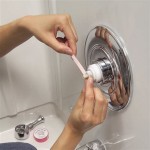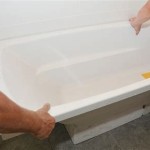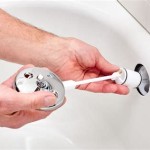Seal For Bathtub: Exploring Essential Aspects for a Watertight Seal
A bathtub seal plays a pivotal role in preventing water leakage, ensuring a comfortable and leak-free bathing experience. Choosing the right seal for your bathtub is crucial to maintain its functionality and aesthetics. Let's explore the essential aspects that make a bathtub seal effective:
Material Durability:
The durability of the seal material determines its ability to withstand continuous water exposure and wear and tear. Silicone, a flexible and waterproof material, is commonly used due to its resistance to mold, mildew, and UV damage. Other materials, such as butyl rubber, acrylic latex, or vinyl, offer varying degrees of durability and should be chosen based on the intended use and lifespan.
Size and Fit:
The seal's size and shape should match the contours of your bathtub perfectly. If the seal is too small, gaps will allow water to seep through. Conversely, an oversized seal may create uneven pressure points and cause the seal to fail prematurely. It's essential to measure the bathtub accurately and choose a seal that fits snugly around its edges.
Adhesive Strength:
A strong adhesive bond is crucial for the seal's long-lasting effectiveness. Look for seals with a high-quality adhesive that can adhere to both the bathtub surface and the sealing material. The adhesive should be able to withstand humidity, temperature changes, and cleaning agents without losing its hold.
Flexibility and Elasticity:
A flexible seal can accommodate the expansion and contraction of the bathtub as it fills and empties. This flexibility prevents the seal from cracking or breaking, ensuring a watertight barrier. Elastomeric seals, made of materials like silicone or rubber, are highly flexible and can withstand movement without losing their effectiveness.
Mildew and Mold Resistance:
The area around the bathtub is prone to moisture, which can lead to the growth of mold and mildew. Choose a seal that is resistant to these organisms. Antimicrobial seals, often treated with fungicides or biocides, help prevent the growth of microorganisms, ensuring a hygienic bathing space.
Choosing the Right Seal:
Consider these factors when selecting a seal for your bathtub:
- The material's durability and longevity
- The seal's size and ability to conform to the bathtub's shape
- The adhesive's strength and ability to withstand moisture
- The seal's flexibility and resistance to cracking
- The material's resistance to mildew and mold
Conclusion:
Selecting the right seal for your bathtub is essential for maintaining a leak-free and comfortable bathing environment. By considering the material durability, size and fit, adhesive strength, flexibility, and resistance to mildew and mold, you can ensure an effective seal for years to come. Remember to follow the manufacturer's instructions for proper installation and maintenance to prolong the seal's lifespan and ensure a watertight bathtub.

How To Seal A Bath Properly

Teleseal Original Award Winning Bath And Shower Seals Easy Fit

Bath Seal Ultra 10 Rectangular Baths Byretech Ltd

Seal Around Your Bath Or Shower Without Using Silicone Sealer

How To Seal A Bath Step By Guide

Caulking A Bathtub Simple Steps For Successful Seal

Seal Around Your Bath Or Shower Without Using Silicone Sealer

How To Seal A Bath Step By Guide

How To Use Bathroom Caulk For A Fresh New Seal

Byretech Bath Seal Ultra 10 White Bswk04 Rectangular Baths Bathroom Trends
Related Posts







